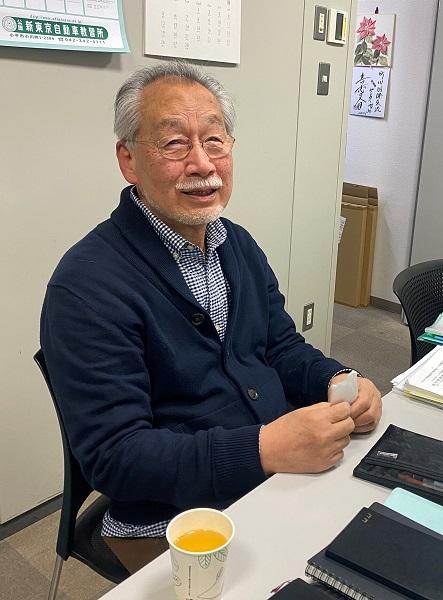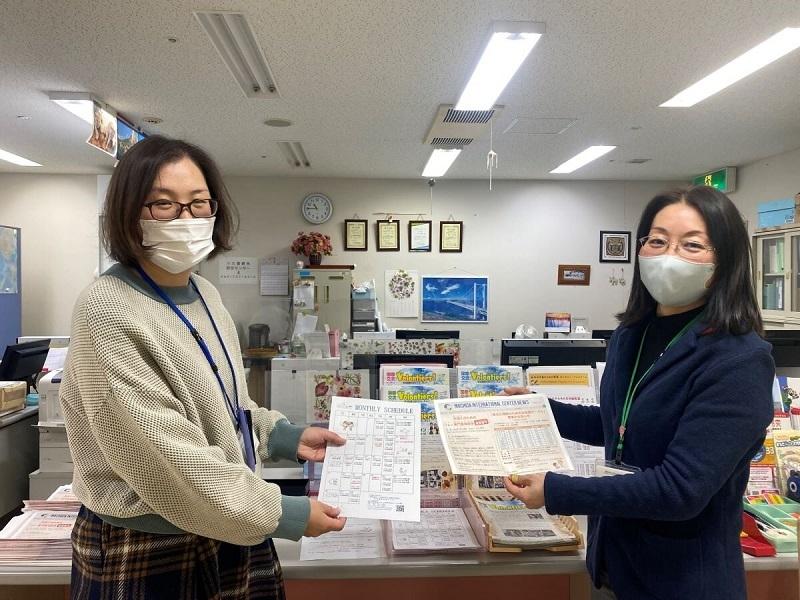Community "Nihongo Kyoshitsu" Activities Report, vol.6
In our sixth report, we are introducing MIC Japanese Class in Machida City!
The MIC Japanese Class is a Japanese language class run by the Machida International Center.

Machida International Center
Machida City is located at the southernmost tip of Tokyo, sticking out like a peninsula that is surrounded on all sides by Kanagawa Prefecture. (Machida City Homepage) Central Machida Station is where the Odakyu Line and the JR Yokohama Line intersect, and as such it has a large number of passengers, which means Machida City is a place where people naturally gather from nearby cities. Therefore, the name "Machida International Center" was chosen instead of "Machida City International Center," and it has become an international exchange center that attracts not only Machida City residents, but also other people who gather in Machida.
Machida International Center is located in the Machida Civic Forum, which is also home to related organizations such as the Machida Council of Social Welfare and the Machida City Community Activity Support Office. The location is just an 8-minute walk from Machida Station on the Odakyu Line or a 4-minute walk from Machida Station on the JR Yokohama Line.
Friday Morning Class
I visited a Japanese class on Friday morning to learn more about it. It was a snowy day, and so the class kept getting calls from students who would be absent, but 11 people showed up by the end of the class, including a new student!
The students were divided into groups according to their level, from those who don't understand Japanese at all to those who are at an advanced level, and then one volunteer was assigned to each group to help them study.


Each class has a coordinator who checks the level of new students and decides which volunteer will help them. In principle, the volunteer that a new student is assigned to will not change as long as the student continues to attend, so they can continue to study with the same volunteer. I was really impressed that both the students and the volunteers were smiling so much as they talked.


Classroom Operation During COVID-19
Currently there are eight classes, five days a week, and they are run by the Japanese Class Group, which is made up of volunteers. I interviewed Mr. Fujimuro, the group's Chairman, and Ms. Tomita from the Machida International Center Secretariat Office.


There are about 400 students in MIC Japanese Classes each year, and each student can participate in up to three classes. In the past there were some years with more than 3,000 students, but the classroom was closed in March 2020 due to the impact of COVID-19. The classroom closure continued until September 2021, when there was a volunteer who was familiar with computers, so the Machida International Center decided to start online classes centered around that person. They held a training session for volunteers who were unfamiliar with how to use Zoom for an online classroom, and eventually people became familiar enough with it to begin classes.
In-person classes resumed in May 2022, and the number of participating volunteers decreased from 120 to 80, limiting participation to one class per person, and currently about 10 students are participating in one class. At the same time, online classes are continuing but less than 10 students are still using them. Machida City stretches a long ways from east to west, so for some people the online classes let them participate without having to travel, and the volunteers and students decide the study time, and so the online classes will continue because they have some advantages over in-person classes.
Childcare Services

MIC Japanese Classes have two classes a week where childcare is available. (Unfortunately, childcare services are currently suspended due to the impact of COVID-19)
The childcare fee is only 100 yen per child, and no reservations are required. I learned about this service from their website, but I also wanted to know where the childcare is, and who took care of the children, and so I asked about it.
As mentioned above, the classrooms are located in the Machida Civic Forum, and luckily there is a nursery room on the same floor as the classroom. There are also volunteer members of the Machida International Center who are qualified as nursery teachers and who look over the children for a fee. Two or three people use the childcare service each time, and, when there are not enough people, the staff in the Machida International Center Secretariat Office help out.
I think that the childcare service makes it possible for some of the students to participate, and it's a wonderful service that makes the most of the classroom being in the Machida Civic Forum!
What is the Role of Japanese Classes?
Mr. Fujimuro, the group's Chairman, started volunteering in 2006 and has been Chairman since 2018. During that time, he has sometimes felt the difficulty of teaching Japanese, but has devised a number of ways to make sure that students want to continue learning, such as by creating his own textbooks. The volunteers also learn quite a bit from the students as well, and Mr. Fujimuro continues to feel that the relationship between the volunteers and the students is not just a one-way exchange of Japanese information from the volunteers, but is instead a relationship of mutual exchange.
After he finished the explaining a variety of things about the classroom, Mr. Fujimuro talked about the role that Japanese classes play. For foreign nationals who use English at work, the classes are an opportunity to speak in Japanese without hesitation in a classroom setting, let them relieve stress by talking with volunteers they are familiar with, enable them to learn the kind of words that native Japanese speakers use in their daily lives, and act as a place for the students to interact with each other.
Through these interviews, I was able to really see that these classes are a meaningful place for both the learners and the volunteers.
That’s all!
By: AS
